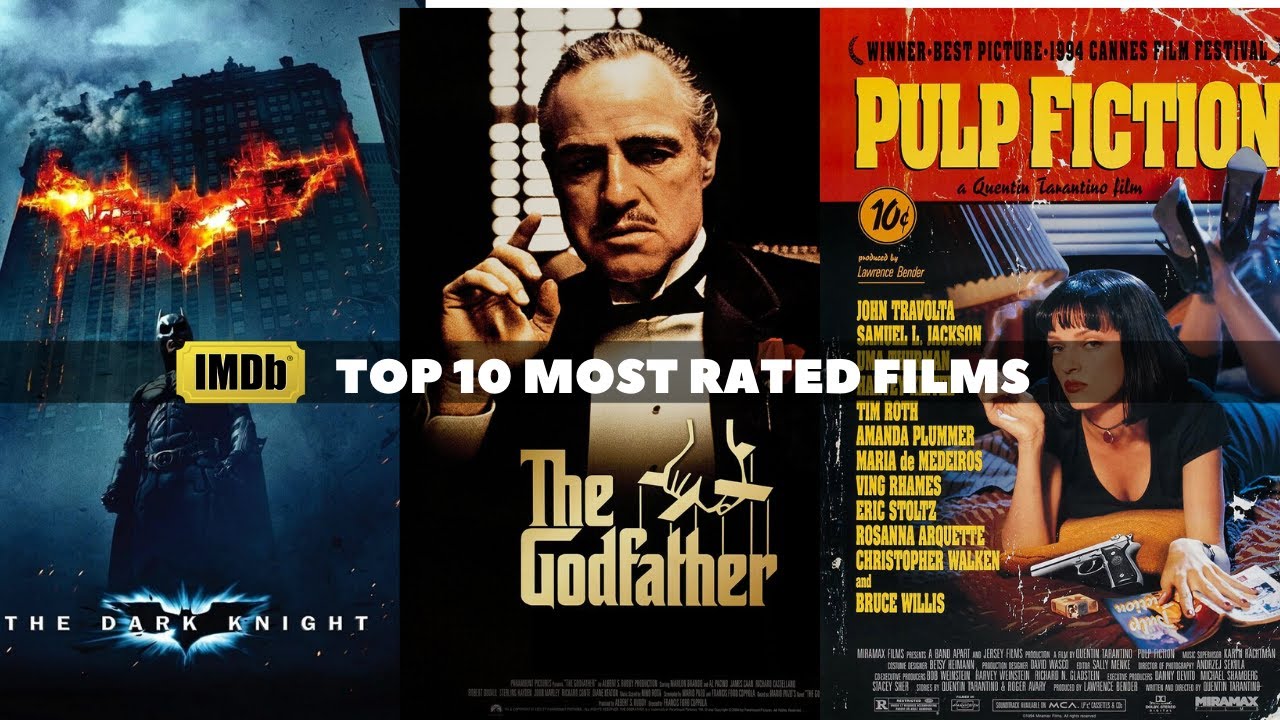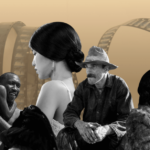Most Iconic R-Rated Movies of All Time: A journey through cinematic history reveals a fascinating tapestry woven from mature themes, groundbreaking visuals, and unforgettable performances. This exploration delves into the criteria defining “iconic” within the R-rated landscape, examining cultural impact, critical acclaim, and enduring influence. We’ll analyze genre representation, the pivotal roles of directors and actors, and the transformative power of technological advancements. The discussion will also consider the societal impact and controversies surrounding these films, alongside the evolution of the R-rating itself.
From the visceral thrills of horror to the darkly comedic wit of satire, R-rated films have pushed boundaries and challenged conventions. This exploration will showcase how these films have reflected and shaped societal attitudes, sparking debates and leaving an indelible mark on popular culture. We’ll examine the evolution of the R-rating system, its impact on filmmaking, and how it has influenced audience expectations over time.
Defining “Iconic” in R-Rated Cinema
Defining what constitutes an “iconic” R-rated film requires a multifaceted approach, considering not just box office success but also its lasting cultural impact, critical acclaim, and enduring influence on subsequent filmmaking. It’s a blend of mainstream recognition and a deeper, sometimes more niche, appreciation that solidifies its place in cinematic history.
The criteria for iconic status in R-rated cinema involve a complex interplay of factors. Cultural impact refers to the film’s ability to permeate societal conversations, inspire trends, or even become a part of the common vernacular. Critical reception signifies the film’s acknowledgment by professional critics and film scholars, often evidenced by awards, accolades, and enduring scholarly analysis. Lasting influence involves its impact on subsequent films, genres, or even cultural attitudes, demonstrating a ripple effect extending far beyond its initial release. A truly iconic film transcends its initial release date, remaining relevant and discussed years, even decades, later.
Examples of Iconic R-Rated Films
Several films exemplify these criteria, showcasing the spectrum between mainstream appeal and cult classic status. Mainstream successes like *Pulp Fiction* (1994) and *The Shawshank Redemption* (1994) achieved both massive box office success and critical acclaim, influencing filmmaking styles and cultural dialogues. Their impact is undeniable; *Pulp Fiction*’s non-linear storytelling and stylized violence remain highly influential, while *The Shawshank Redemption*’s themes of hope and perseverance continue to resonate. In contrast, films like *Pink Flamingos* (1972) and *The Rocky Horror Picture Show* (1975) achieved cult classic status through dedicated fan bases and repeated viewings, maintaining a vibrant cultural presence despite limited initial mainstream success. These films’ iconic status stems from their unique and often transgressive nature, fostering devoted communities and influencing later subgenres.
The Role of the R-Rating in Iconic Status
The R-rating itself often contributes significantly to a film’s iconic status. The restriction inherently creates a sense of exclusivity and intrigue, attracting audiences curious about the mature themes explored. Films pushing boundaries with violence, sexuality, or mature language frequently generate more discussion and controversy, further amplifying their cultural impact. However, it’s crucial to note that an R-rating is not a guarantee of iconic status. Many R-rated films fail to achieve lasting relevance, highlighting that the mature content must be integrated skillfully into a compelling narrative to achieve lasting resonance. The R-rating serves as a catalyst, but the film’s overall quality and artistic merit are ultimately the deciding factors in its journey towards iconic status. Films like *Taxi Driver* (1976), with its unflinching portrayal of urban alienation and violence, demonstrate how an R-rating can enhance the power of a film’s themes and contribute to its lasting impact. The film’s bleak atmosphere and gritty realism, made possible by the R-rating’s freedom, cemented its place as a cinematic landmark.
Genre Representation in Iconic R-Rated Films
The R-rating, signifying restricted content for audiences under 17, has become intrinsically linked to some of cinema’s most memorable and influential films. These films haven’t just pushed boundaries; they’ve defined genres, shaped cultural conversations, and left an undeniable mark on the cinematic landscape. Analyzing the genres most prominently represented among iconic R-rated movies reveals fascinating trends in storytelling and audience appeal.
The prevalence of certain genres within the R-rated landscape is directly tied to the freedom the rating affords filmmakers. The ability to depict violence, sexuality, and mature themes allows for a depth and complexity often unavailable to films with milder ratings. This, in turn, attracts audiences seeking more intense and thought-provoking cinematic experiences. The resulting films often become cultural touchstones, their influence extending far beyond the silver screen.
Genre Breakdown of Iconic R-Rated Films
The following table highlights the thematic elements and lasting impact of iconic R-rated films across several key genres. The selection of films represents a range of critical acclaim and cultural significance, not an exhaustive list of every R-rated film ever made.
| Genre | Iconic Film Example | Key Thematic Elements | Lasting Impact |
|---|---|---|---|
| Horror | The Exorcist (1973) | Religious doubt, the fragility of the human psyche, the power of evil, terrifying visuals and sound design | Elevated horror to a new level of psychological intensity, influencing countless horror films that followed. Its depiction of demonic possession remains iconic. |
| Action | Die Hard (1988) | Underdog hero, thrilling action sequences, clever use of setting, survival against overwhelming odds | Defined the modern action hero archetype, influencing countless action films with its blend of action, suspense, and humor. The “Christmas movie” aspect added to its unique cultural impact. |
| Comedy | Goodfellas (1990) | Dark humor, exploration of criminal underworld, unflinching portrayal of violence, complex character dynamics | Redefined gangster films, shifting the focus from romanticized violence to the gritty reality. Its comedic elements and memorable characters contributed to its enduring popularity. |
| Drama | Raging Bull (1980) | Self-destruction, violence, masculinity, the psychological toll of ambition | Set a new standard for realistic and intense portrayals of human struggle, influencing subsequent biographical dramas and films focusing on psychological turmoil. |
The Impact of Directors and Actors: Most Iconic R-Rated Movies Of All Time
The enduring legacy of iconic R-rated films rests not only on compelling narratives and provocative themes but also on the distinctive visions of their directors and the unforgettable performances of their actors. These individuals, through their creative choices and powerful portrayals, have shaped the genre’s evolution and continue to inspire filmmakers and performers today. Their contributions extend beyond individual films, influencing the stylistic and thematic trends that define R-rated cinema.
The synergy between directorial vision and acting prowess is crucial in crafting truly memorable R-rated films. A director’s unique style—be it through cinematography, pacing, or thematic exploration—can elevate a script, while a powerful performance can imbue a character with depth and complexity that transcends the page. This interplay between artistic direction and acting talent is what elevates certain films to iconic status within the R-rated genre.
Directorial Styles in R-Rated Cinema, Most Iconic R-Rated Movies of All Time
Several directors have left an indelible mark on R-rated cinema through their consistent stylistic choices and thematic explorations. Quentin Tarantino, for example, is known for his stylized violence, nonlinear narratives, and sharp dialogue, evident in films like *Pulp Fiction* and *Reservoir Dogs*. His influence on subsequent filmmakers is undeniable, with many emulating his distinctive visual flair and penchant for morally ambiguous characters. Similarly, Martin Scorsese’s gritty realism and exploration of morally complex characters in films such as *Taxi Driver* and *Goodfellas* have profoundly impacted the gangster genre and the portrayal of urban decay. His commitment to nuanced character studies and unflinching portrayals of violence continues to resonate with filmmakers and audiences alike. David Fincher’s dark, atmospheric style, evident in films like *Seven* and *Fight Club*, has become a hallmark of psychological thrillers, influencing a generation of filmmakers interested in exploring themes of paranoia, societal alienation, and the darker aspects of human nature.
Iconic Performances in R-Rated Films
The impact of actors on the landscape of iconic R-rated cinema is equally significant. Their ability to embody complex, often morally ambiguous characters, and deliver powerful performances that resonate with audiences is essential to the success of these films.
- Jack Nicholson: Nicholson’s intense and unpredictable performances in films like *One Flew Over the Cuckoo’s Nest* and *The Shining* redefined the boundaries of acting in R-rated films. His ability to portray both vulnerability and menace established him as a master of the genre.
- Robert De Niro: De Niro’s commitment to method acting and his ability to embody a wide range of complex characters, from the volatile Travis Bickle in *Taxi Driver* to the ambitious Jake LaMotta in *Raging Bull*, solidified his place as one of the greatest actors of all time. His performances are characterized by a raw intensity and emotional depth that remains unparalleled.
- Al Pacino: Pacino’s electrifying performances, particularly in *Scarface* and *Dog Day Afternoon*, are characterized by a captivating intensity and raw energy. His ability to portray characters driven by ambition and desperation has cemented his status as a legend in the R-rated genre.
These are just a few examples of the many actors who have contributed significantly to the rich tapestry of iconic R-rated cinema. Their commitment to their craft and their willingness to take on challenging roles have not only shaped the genre but have also elevated the art of acting itself.
Technological Advancements and R-Rated Cinema

Technological advancements have profoundly shaped the landscape of R-rated cinema, influencing not only the creation of films but also their impact on audiences. From the introduction of sound to the advent of CGI, technological progress has consistently pushed the boundaries of what’s possible, allowing filmmakers to explore mature themes with increasing realism and visceral impact. This evolution has had a significant effect on the portrayal of violence, sexuality, and other mature content, often reflecting and shaping societal attitudes towards these topics.
The impact of technology on R-rated films is readily apparent when comparing different eras of filmmaking. Early R-rated films relied on suggestion and implication to convey mature themes, constrained by the limitations of the technology available. As technology advanced, filmmakers gained new tools to depict these themes more explicitly and graphically, leading to a shift in how such content was presented and received.
Technological Advancements and Their Impact on R-Rated Content
The following table illustrates the relationship between technological advancements and their impact on the content and reception of iconic R-rated films across different eras:
| Era | Technological Advancement | Example Film | Impact on R-Rated Content |
|---|---|---|---|
| Silent Era (1910s-1920s) | Innovative camera angles, editing techniques | The Cabinet of Dr. Caligari (1920) – while not explicitly R-rated by modern standards, its unsettling imagery and themes pushed boundaries for its time. | Mature themes were conveyed through visual storytelling and implied violence or sexuality, relying heavily on the audience’s interpretation. The lack of sound meant that atmosphere and visuals were paramount. |
| Classic Hollywood Era (1930s-1960s) | Sound, improved lighting techniques, color film | Bonnie and Clyde (1967) – a pivotal film in the shift towards more graphic violence in cinema. | Sound added a new layer of realism to violence and sexual tension. Color film enhanced the visual impact of both, making them more visceral and memorable. However, censorship still limited explicit depictions. |
| New Hollywood Era (1970s-1980s) | Improved special effects, Steadicam, more liberal censorship | Taxi Driver (1976) – showcased gritty realism and psychological depth, benefiting from improved camera work and lighting. | The loosening of censorship allowed for more explicit depictions of violence and mature themes. Technological advancements like the Steadicam allowed for more fluid and immersive camera movement, increasing the impact of violent scenes. |
| Modern Era (1990s-Present) | CGI, digital filmmaking, high-definition | Fight Club (1999) – used stylistic techniques and special effects to enhance the depiction of violence and chaos. | CGI and digital filmmaking have allowed for increasingly realistic and graphic depictions of violence and sexuality. High-definition has increased the visual clarity and impact of these scenes. Filmmakers have more creative control and can experiment with stylistic choices to enhance the mature content. |
Cultural and Societal Impact of Iconic R-Rated Movies
Iconic R-rated films have profoundly shaped cultural landscapes, acting as both reflections of and catalysts for societal shifts in attitudes towards sensitive subjects. These films haven’t simply entertained; they’ve sparked debates, challenged norms, and left lasting imprints on how we perceive violence, sexuality, and other mature themes. Their impact extends beyond immediate box office success, influencing subsequent artistic endeavors and shaping ongoing public discourse.
The influence of R-rated films on societal attitudes is multifaceted and complex. They often provide a platform for exploring controversial topics, forcing audiences to confront uncomfortable realities and question established moral boundaries. This can lead to increased awareness and potentially, societal change. Conversely, they can also be criticized for normalizing or glorifying violence and other problematic behaviors.
Societal Attitudes Towards Violence Depicted in Iconic R-Rated Films
Films like *Taxi Driver* (1976) and *Pulp Fiction* (1994) offer stark portrayals of violence, reflecting anxieties and societal frustrations of their respective eras. *Taxi Driver*, with its depiction of urban alienation and vigilante justice, tapped into a growing sense of societal unrest and disillusionment in post-Vietnam America. *Pulp Fiction*, while stylistically different, similarly explored themes of violence and moral ambiguity, albeit with a more playful and ironic approach. The controversies surrounding these films, however, highlighted the ongoing debate about the representation of violence in media and its potential impact on viewers. The graphic nature of the violence in both films sparked discussions about censorship and the responsibility of filmmakers to portray violence responsibly.
The Portrayal of Sexuality and its Impact
The depiction of sexuality in R-rated films has been equally impactful. Films such as *Basic Instinct* (1992) and *9 1/2 Weeks* (1986) generated significant controversy due to their explicit sexual content, challenging prevailing social norms around sexuality and gender. *Basic Instinct*, in particular, became a cultural phenomenon, sparking debates about female sexuality, power dynamics, and the limits of acceptable onscreen depictions. The controversy surrounding these films fueled public discourse on censorship and the changing attitudes towards sexual representation in mainstream media. The long-term effect can be seen in the increased openness in later films to depict a wider range of sexual experiences and orientations.
Controversies and Censorship
Many iconic R-rated films have faced censorship challenges and public backlash. The battles over censorship surrounding films like *The Exorcist* (1973) and *Midnight Cowboy* (1969) exemplify the ongoing tension between artistic expression and societal expectations. *The Exorcist*, with its graphic depiction of demonic possession, sparked widespread moral panic and calls for censorship. *Midnight Cowboy*, despite its eventual critical acclaim, initially faced significant opposition due to its portrayal of homosexuality and its perceived moral ambiguity. These controversies not only shaped public discourse but also influenced the evolution of film rating systems and censorship practices.
Long-Term Cultural Legacy
The cultural legacy of iconic R-rated films is evident in their enduring influence on subsequent art, media, and popular culture. The stylistic innovations of *Bonnie and Clyde* (1967), for example, influenced countless films that followed, while the dark humor and nonlinear storytelling of *Pulp Fiction* became a template for numerous independent films. The cultural impact of these films extends beyond direct imitation; they have also shaped broader aesthetic sensibilities and thematic concerns in film and other media. The stylistic choices, character archetypes, and thematic explorations found in these films continue to resonate with filmmakers and audiences today.
The Evolution of the R-Rating Itself
The Motion Picture Association of America (MPAA) rating system, introduced in 1968, significantly altered the landscape of American cinema. The R-rating, initially intended to denote films unsuitable for children, has undergone a considerable evolution, reflecting shifting societal attitudes towards mature content and the ever-changing nature of filmmaking. This evolution has profoundly impacted the production, distribution, and reception of R-rated films.
The initial implementation of the R-rating was relatively straightforward, primarily focusing on violence, sexual content, and strong language. However, the interpretation and application of these guidelines have varied across decades, influenced by social and cultural changes. The line between what constituted “acceptable” mature content and what was deemed excessively graphic or exploitative has shifted considerably over time.
Changes in R-Rating Standards Across Decades
The 1970s saw a relatively liberal application of the R-rating, with films exploring previously taboo subjects gaining wider acceptance. Films like *Midnight Cowboy* (1969), though initially X-rated, later received an R-rating, demonstrating a gradual broadening of acceptable content. The 1980s, however, witnessed a more conservative trend, with a stricter enforcement of guidelines in response to concerns about violence and its portrayal in films. This period saw an increase in PG-13 ratings as studios sought to reach a wider audience. The late 1990s and 2000s brought a resurgence of more explicit R-rated content, particularly in genres like horror and action, mirroring a growing desensitization to violence in popular culture. More recently, the R-rating has become increasingly nuanced, with a greater focus on the context and artistic merit of mature themes. The line between “acceptable” violence and gratuitous violence continues to be debated and re-evaluated.
The R-Rating’s Influence on Filmmaking and Audience Expectations
The R-rating has profoundly influenced the creative choices of filmmakers. The knowledge that a film will be restricted to a mature audience can encourage filmmakers to push creative boundaries and explore more mature themes without the constraints of a broader appeal. Conversely, the potential for reduced viewership due to the R-rating can lead filmmakers to compromise their vision or incorporate elements that would broaden the appeal to a wider audience.
The R-rating also shapes audience expectations. An R-rating immediately signals to viewers the potential for mature content, prompting certain expectations about the film’s themes and style. This pre-existing understanding can affect audience reception and interpretation of the film. For example, an R-rated horror film is likely to be judged differently than a PG-13 romantic comedy, with viewers anticipating a higher level of violence or gore in the former. This dynamic relationship between the R-rating, filmmakers’ choices, and audience reception underscores the rating’s continuing evolution and its significant impact on the film industry.
Wrap-Up
In conclusion, the “Most Iconic R-Rated Movies of All Time” are more than just films; they are cultural touchstones, reflecting societal shifts and pushing creative boundaries. Their lasting impact stems not only from their technical achievements and compelling narratives but also from their ability to spark dialogue, challenge norms, and leave a lasting impression on viewers. The exploration of these films offers a valuable insight into the evolution of cinema and its complex relationship with societal attitudes towards mature themes.





